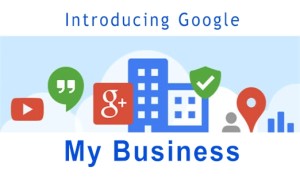One of the biggest challenges in any business is developing a consistent pipeline of work. The home automation and custom integration business is certainly no exception. As with many small businesses finding new contracts becomes a priority until you get a flood of work. Then the priority changes to completing this work, during which time you again neglect developing your pipeline. We’re going to cover some steps you can take to help maintain a steady stream of business all the time.
Create A Plan
When first getting started with any business you will find there more things to do than there are hours in the day. Taking the time to create a plan and dedicating time to each aspect of that plan can help ensure that you don’t end up losing focus and neglecting any part of your potential lead pipeline.
When developing the marketing plan for your home automation or custom integration business you should consider all available options. This includes:
- Construction contacts such as builders, architects, and interior decorators/designers
- Online marketing such as SEO or paid advertising
- Local Networking and Outreach
- State and County Resources
Construction Industry Contacts
Everyone knows about this one. In the world of home audio video and automation the first thing you want to do is connect with the holy trinity. Architects, builders, and interior designers/decorators. It makes perfect sense as these professionals are always in front of your ideal customer. Their recommendation on contractors to use can have a significant influence on their customers buying decision. In our business, a referral from one of these three led to a closed deal 9 out of 10 times. It was a no brainer.
Unfortunately every other AV and home automation business in your area is thinking the same thing. Theses professionals can offer a steady stream of new construction and remodel projects so their attention is sought by everyone in the industry. This means taking a different approach to get their attention.
Many dealers have success in offering discounts on personal systems installed in a builder’s or architect’s home. It’s a great way to showcase your entire process from design to implementation. The only problem is that these opportunities only come up every once in a while. There are a few better ways of getting their attention.
Focus on Service
Anyone in the construction industry has at one point or another worked with a company with terrible service. And builders, architects and designers sometimes find themselves in the circumstance of having recommended such a business to their client. If you want to get their attention, offer to take on any service issues that may have been left unresolved by another integrator.
This won’t necessarily lead to a flood of high revenue jobs, but it will showcase your skills at taking a bad situation and turning it around. You’ll make your contact look good, and give them a great reason to use your business in the future. Just be sure that you can actually fix their client’s problems.
Differentiate Your Business
The audio video market is overflowing with companies that can hang a flat screen TV and install speakers. Architects and interior designers are more interested in companies that can come up with creative ways to hide technology so that it has less of an impact on the overall look of a home.
Put some extra effort into a couple projects where you can leverage hidden technology. This might mean providing equipment at cost for a customer in order to use their home for a photo shoot. A word of advice. Spend the money on getting a professional photographer. Shots taken with a smart phone aren’t going to cut it when you’re trying to show off your work.
Don’t Focus on Price
Unless you are attempting to become the low cost leader of custom integration don’t position yourself as the least expensive option. Instead, focus on providing creative solutions, reliable equipment, and offering the ultimate in service. Buyers will always pay more for better service. And those who aren’t willing to pay won’t be good clients anyway.
Develop an Online Marketing Strategy
A cohesive online strategy is made up of several parts. Basically it boils down to your website, social media, email marketing, and paid advertising.
Building Your Website
Your online strategy should start with your website. There are a number of companies out there that specialize in building websites for custom integrators. These tend to be more expensive than a site from a traditional web developer, but the time you save in creating content, sourcing images, and site layout can be enormous.
It’s important to ensure that your website accurately represents your business. While you can have content for your services page written by anyone knowledgeable on the subject of home automation, your “About Us” page and employee pages should paint a personal picture of who your business is and what sort of values you have.
If you don’t give potential customers something worthwhile and notable about your business they are likely to move on without ever contacting you.
There are 2 critical components of any website:
- The ability to drive targeted local traffic
- Converting that traffic into leads.
Drive Local Traffic with Search Engine Optimization (SEO)
 If you’ve been in business for longer than 45 minutes you’ve probably gotten a phone call attempting to sell you on a local SEO service. While these robo-call services typically don’t know anything about how to generate targeted local traffic, there are quality companies out there that provide this exact service.
If you’ve been in business for longer than 45 minutes you’ve probably gotten a phone call attempting to sell you on a local SEO service. While these robo-call services typically don’t know anything about how to generate targeted local traffic, there are quality companies out there that provide this exact service.
In the world of SEO you get what you pay for. Unfortunately spending $300/month isn’t going to cut it in any sort of competitive market. To see a significant increase in targeted leads you should expect to pay upwards of $1,000/month. This sounds expensive, but this should translate directly into more leads coming into your business every single month.
What Do You Get for That Price?
An experienced local search engine marketer will most likely want to tweak a few things on your site to ensure Google and other search engines start paying attention to it. This will include adding your business name, address, and phone number in specific locations, optimizing content for relevant keywords ( example “home automation companies in Denver”), and linking between pages.
You should also expect to get regular updated content for your blog. This should include articles that are relevant to automation topics such as lighting control, automated shades, etc. The articles should be relevant to both your geographic location and your particular business. This gives all the search engines a clear indication of where you are and what you do.
Optimized Google My Business Listing
 Your business should also have an associated Google My Business listing. This is a web property that is specific to your business that is created by Google. When properly completed and optimized this listing will show above the organic search results in what is called the “Map Pack”. Optimizing your Google My Business page is a process unto itself and should be handled by a competent local marketer.
Your business should also have an associated Google My Business listing. This is a web property that is specific to your business that is created by Google. When properly completed and optimized this listing will show above the organic search results in what is called the “Map Pack”. Optimizing your Google My Business page is a process unto itself and should be handled by a competent local marketer.
You can look to see if you business is already online here. https://business.google.com/add
Other Web Properties
Truly dominating your local online market involves using more than just your website. An experienced marketer can also help you get traffic from your social media profiles, listings on sites like Yelp!, and for Control4 dealers, getting traffic through your Control4 mini site. The idea being that when a potential client searches for a home automation company in your area they don’t just see your website, but a whole host of your properties. This helps to establish your brand as an authority before they even call you.
Converting Traffic Into Leads
Another important and often overlooked component of a good website is it’s conversion rate. All the traffic in the world won’t do you any good if it doesn’t lead to phone calls. Many web designers focus far too much energy on creating “beautiful” websites. While they look amazing, they often have very poor conversion rates.
Conversion rate testing is an important part of the process of building your site. Split testing and other techniques allow you to optimize conversions so that your hard earned traffic turns in to revenue. Again an experienced marketer should offer this as part of their overall service.
Here are a few of the must have’s to help your conversion rates:
- professional photographs of your projects
- prominently displayed customer testimonials
- contact number and email form
It’s as simple as that. Show potential customers what you can do, let your existing customers sell them on your service, and show them where to sign up.
Email Marketing
Another powerful tool you have at your disposal is email marketing. This one takes a bit more work, but can offer huge returns. By adding all of your clients and as many prospects as possible to your email address you are able to stay in front of them on a regular basis.
Most businesses spend significantly more trying to acquire new customers than they do maintaining existing relationships. You can do both with email marketing. Sending out a steady stream of industry news and company information is a great way to stay on your client’s minds. And when you’re existing clients see something that piques their interest the sale is all but closed as they already know and trust you.
Using Social Media
Most small businesses neglect social media because they consider it a chore. But potential clients use this as a way to find more information about a business. At a minimum you should have a Facebook page. Ideally you should create profiles on all the major sites like Linkedin, Twitter, Facebook, and Pinterest.
You don’t have to post to your social media accounts all the time, but make sure you keep them somewhat current. This can be as simple as posting something interesting you read on an industry website or pictures of a recently completed project. Posting 4-5 times per month is enough to make your Facebook page look fully flushed out within a couple months.
Local Networking Events
Going to local networking events can be enjoyable for some and a true chore for others. But anyone who’s been in business long enough to start seeing referrals bringing in work understands the power of having a personal network. It’s a numbers game. Everyone you meet at one of these events has their own network of friends and colleagues. This can quickly turn into a reliable stream of quality work. Referral leads are significantly easier to close than cold leads and they often have the benefit of being pre-qualified.
There are any number of ways to find networking groups in your area. Your local Chamber of Commerce is a great place to start.
State and County Resources
You might be wondering how state your state or county bureaucracy can help you generate leads. It’s actually quite simple. By far the best return on marketing dollars we ever saw in our custom integration business was from sending letters to individuals who had filed for new construction permits. Some counties allow you to search online, others will require that you come into the office.
Either way you can choose which people to mail based on the price and location of the home. A hand-addressed envelope with a simple introductory letter was all it took to get a handful of projects each and every year. It was well worth the time and the cost of the stamp.
Putting Your Plan Into Action
Now that you have a basic plan it’s time to put it into practice. It is HUGELY important to allocate time to your plan every week. Because as soon as you start putting it off your pipeline is going to suffer.
Break your plan down into actionable items that can be performed every week. Then be sure to schedule time to do it. It’s not going to provide instant results, but within a relatively short amount of time you will be able to count on a steady pipeline of new projects.
Resources:
http://mashable.com/2011/04/19/email-marketing-tactics/#ryJy.HPLd8q3

